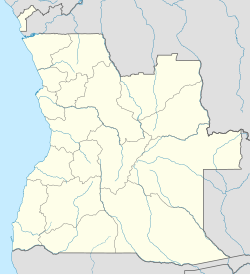
Luanda is the capital and largest city of Angola. It is Angola's primary port, and its major industrial, cultural and urban centre. Located on Angola's northern Atlantic coast, Luanda is Angola's administrative centre, its chief seaport, and also the capital of the Luanda Province. Luanda and its metropolitan area is the most populous Portuguese-speaking capital city in the world and the most populous Lusophone city outside Brazil, with over 8.3 million inhabitants in 2020.
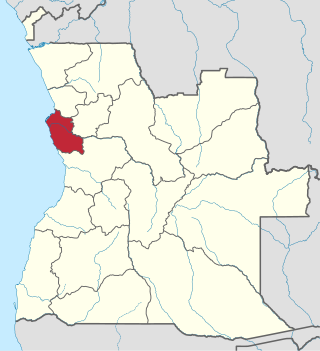
Luanda is a province of Angola. It covers an area of 18,835 km2, and had a population of 6,945,386 at the Census of 16 May 2014. The latest official estimate is 9,079,811.
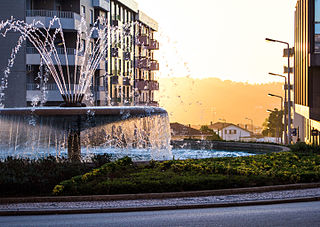
Oliveira de Azeméis is a city and a municipality located in Porto Metropolitan Area in Portugal. Administratively, the municipality belongs to the District of Aveiro. The population of the municipality in 2011 was 68,611, in an area of 161.10 km2. The city itself has a population of about 20,000. Oliveira de Azeméis is located 35 km to the south of Porto. It is less than 20 km far from the Atlantic Ocean. The municipal holiday is the Monday that follows the 2nd Sunday of August.

Rocinha is the second largest favela in Brazil, located in Rio de Janeiro's South Zone between the districts of São Conrado and Gávea. Rocinha is built on a steep hillside overlooking Rio de Janeiro, and is located about one kilometre from a nearby beach. Most of the favela is on a very steep hill, with many trees surrounding it. Around 200,000 people live in Rocinha, making it the most populous favela in Brazil.
José Luandino Vieira is an Angolan writer of short fiction and novels.
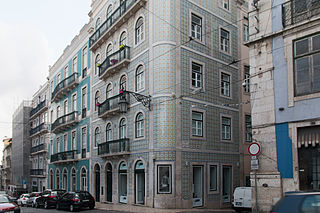
Bairro Alto is a central district of the city of Lisbon, the Portuguese capital. Unlike many of the civil parishes of Lisbon, this region can be commonly explained as a loose association of neighbourhoods, with no formal local political authority but social and historical significance to the urban community of Lisbon and of Portugal as a whole.

Girabola, or Campeonato Nacional de Futebol de Séniores Masculinos, is the top division of Angolan football. It is organized by the Angolan Football Federation.

São João de Meriti is a Brazilian municipality in the state of Rio de Janeiro. Its historical name is São João do Rio Meriti. Its population was 472,906 inhabitants in 2020. It's located in the region of Baixada Fluminense, having 34.996 km2.
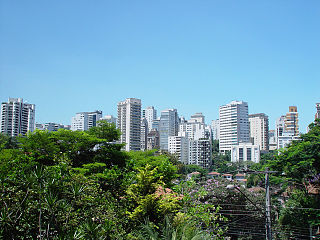
A bairro is a Portuguese word for a quarter or a neighborhood or, sometimes, a district which is within a city or town. It is commonly used in Portugal, Brazil, Mozambique, Guinea-Bissau, and other Portuguese-speaking places. Bairro is cognate with Spanish barrio and Catalan barri, descending from the same Andalusi Arabic word بري or bárri, meaning outskirts or surroundings of a city.
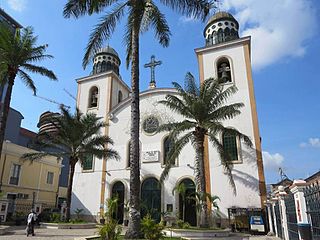
Portuguese Angolans are citizens of Angola who are either descended from Portuguese people or Portuguese emigrants permanently living in Angola. The number of Portuguese Angolans precipitously dropped during and immediately after the Angolan War of Independence, but several hundreds of thousands have either returned or emigrated to live in Angola. As of 2022, they make up approximately 0.6% of Angola's population.

Isabel dos Santos is an Angolan businesswoman, the eldest child of Angola's former President José Eduardo dos Santos, who ruled the country as a dictator from 1979 to 2017.
Sambizanga is a 1972 film directed by Sarah Maldoror and written by Maldoror, Mário Pinto de Andrade, and Maurice Pons, based on the 1961 novella The Real Life of Domingos Xavier by José Luandino Vieira. Set in 1961 during the onset of the Angolan War of Independence, it follows the struggles of Angolan militants involved with the Popular Movement for the Liberation of Angola (MPLA), an anti-colonial political movement. Maldoror co-wrote the screenplay with her husband, who was a leader within the MPLA. Sambizanga was the first feature film produced by a Lusophone African country.
Ingombota is one of the six urban districts that make up the municipality of Luanda, in the province of Luanda, the capital city of Angola. Ingombota is home to the central business district of Luanda, Angola. The economic, political and symbolic center of the city and the nation, it is Luanda's oldest district. The district is home to most of Luanda's prominent hotels and office towers.

Rangel is one of the six urban districts that make up the municipality of Luanda, in the province of Luanda, the capital of Angola. The Rangel District is one of the older and more urbanized in Metropolitan Luanda. The district has an area of 6.2 square kilometers. The district is best known as the home of Americo Boavida University Hospital as well as several large sporting facilities including Pavilhão da Cidadela, Pavilhão Anexo and Pavilhão Anexo II.

Maianga is one of the six municipalities of the administrative division of the province of Luanda, Angola. In 2011, as part of a restructuring of Luanda's regional government, the municipality was designated as one of Luanda's six urban districts. The area is one of the older quarters of Luanda and was established before independence. The area is best known for Quatro de Fevereiro Airport and its strong musical culture.

Roque Santeiro is a Brazilian primetime telenovela produced and broadcast by TV Globo. It premiered on 24 June 1985 and ended on 21 February 1986, replacing Corpo a Corpo and was replaced by Selva de Pedra.
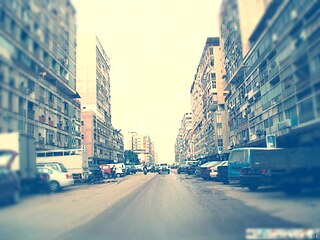
Avenida Comandante Valódia also known as Bairro dos Combatentes is a residential area neighborhood in Luanda's central municipality of Sambizanga in Luanda province of Angola, and is centered on a busy interchange. It has a length of 1.61 km ² and about 144,000 inhabitants and is split in both ways, it is bordered to the west by Kinaxixi, on the north by Marçal, in the east by São Paulo, and south by Avenida Brasil. It has the following coordinates: Latitude: -8°49'5.88" and Longitude: 13°14'51.36. The neighborhood is known for its office and residential buildings, and is also home to the famous Hotel Tròpico, the renowned 147 public school and the now defunct Feira Ngoma.
The Mercado Roque Santeiro was an open-air marketplace in the district of Sambizanga, in the city of Luanda, the capital of Angola. It opened in 1991 with the official name of Mercado Popular da Boavista; it was named Roque Santeiro after the Brazilian telenovela of same name, aired at the time on Angolan television.

Eusébio de Queirós Coutinho Matoso da Câmara was a Brazilian magistrate and politician, Minister of Justice (1848–1852) and author of one of the most important laws of the Empire of Brazil, the Eusébio de Queirós Law, which suppressed the slave trade and paved the way for its eventual eradication. He was also responsible for the Commercial Code of 1850 that still remains partly in force today.

Artur Nunes was an Angolan musician, composer, and activist. In his time, Nunes was one of the most influential voices and composers in the pre-independence days of revolutionary Angola. Nunes, along with David Zé, Urbano de Castro and many others, was a part of a group of musicians called the FAPLA-Povo Alliance who had the role to spread and divulge awareness to Angolan citizens helping a movement of revolution. He was nicknamed "O Espiritual" due to his expertise in manifesting his feelings in a rather contagious way as if he could communicate with souls.
